Go EV the Scandinavian Way
If you see a Polestar 2 parked along the street or hear it roll silently by, you’re forgiven if you don’t know what it is. You will notice that it’s a handsome, premium-grade midsize car that looks like a tall sedan (it’s actually a hatchback).
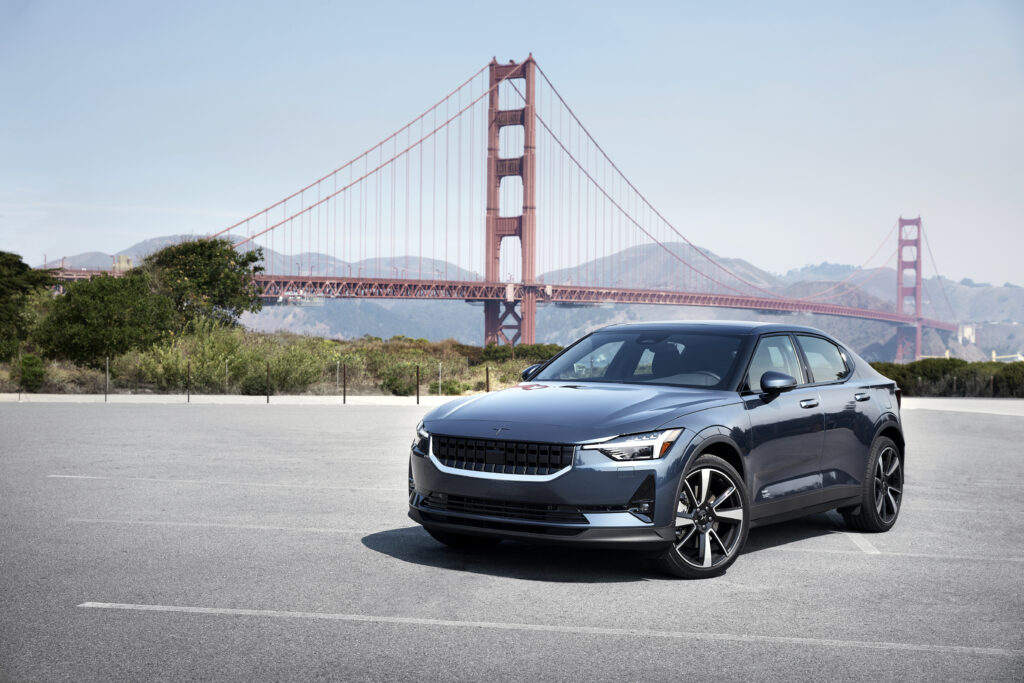
The secret is that Polestar is an electric performance brand from Volvo and its Chinese owner, Geely Holding. It was established in 2017 and is based in Gothenburg, Sweden, where Volvo has been for a long time (although the Polestar 2 is built in China).
I enjoyed a long weekend with a 2021 Polestar 2, and it certainly makes a great first and lasting impression in a market segment that is starting to grow—and will soon be full of choices.
The car is a “2” because it was preceded by the “1,” which is an electric performance plug-in hybrid GT, with a six-figure price tag and a limited output of 500 units per year over the next three years.
A High-Tech Customer Experience
If you’re thinking, “this sounds like a Swedish Tesla,” you’re getting the idea. By taking what could be “Volvo’s EV model” and breaking it out as a standalone brand, Volvo and Geely are promoting exclusivity while creating a high-tech customer experience. From my experience, it’s working.
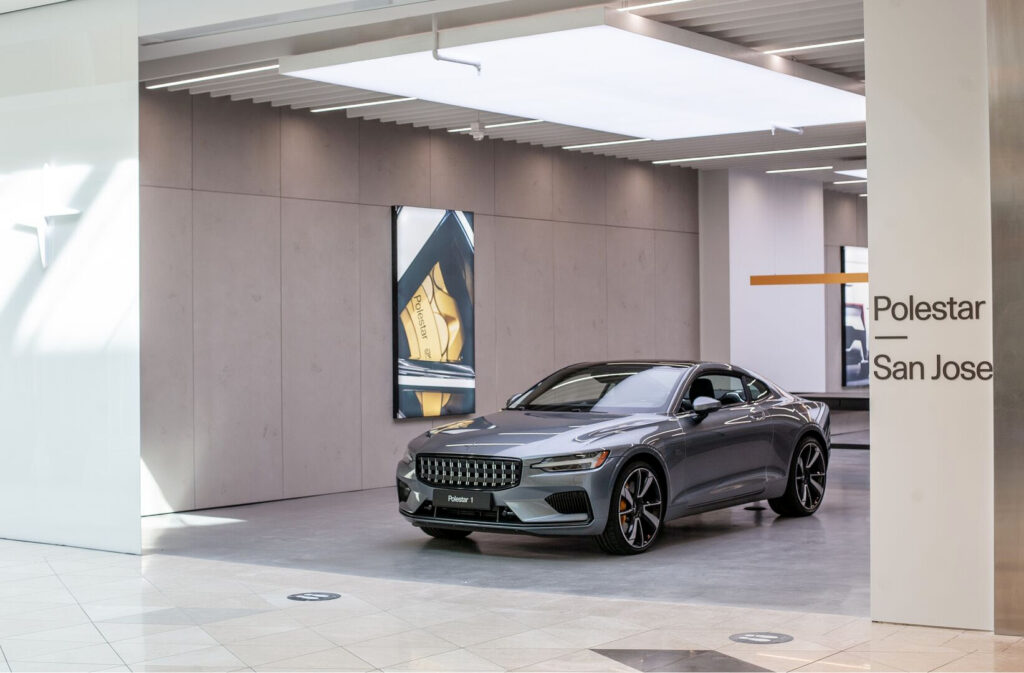
The vehicles will be sold online, and also shown off at strategically located “spaces,” where you can browse in a minimalist, Danish (Swedish?) modern showroom to get a feel for the cars before placing your order. There are already spaces in New York City and Los Angeles, and there are now two in the San Francisco Bay Area, where I’m located. The newest Polestar Space just opened in Silicon Valley, at the Westfield Valley Fair, 2855 Stevens Creek Boulevard, San Jose. There’s a second location in Corte Madera in Marin County.
Polestar also offers a convenient home delivery and service program, allowing customers who live within 150 miles of the Valley Fair Space, meaning from San Francisco in the north to Monterey Bay Peninsula in the south, to have a new car delivered to their door, as well as complimentary roundtrip transportation for future servicing.
Good Looking Lines
The 2021 Polestar 2 makes a fine first impression, with its smooth flanks and chiseled edges, open mouth with black-square-filled grille and slices of taillamps at the rear. The Polestar logo looks like two boomerangs and is not at all like the familiar Volvo ironmark.
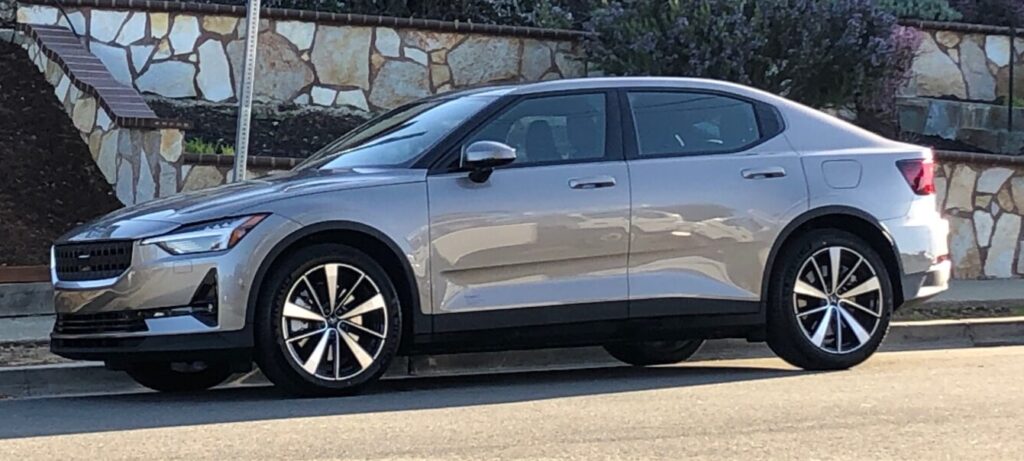
In a world obsessed with crossovers and SUVs, this is a car that looks like a tall sedan but actually provides hatchback practicality, including a fold-up panel for grocery bags that includes hooks and a strap.
Test Runs on Freeway and Back Roads
I tested the car with two trips—one primarily freeway and the other on my local, beautiful back roads. In each case, the car acquitted itself athletically and in great comfort, as expected and hoped. The freeway jaunt was to San Rafael, in Marin County, which meant open freeways, bridge crossings and a short test loop through town, where I showed off the car’s rocket acceleration to my son. A BMW owner, he is a possible future Polestar buyer, which made this a demo ride and reinforced my positive impressions.
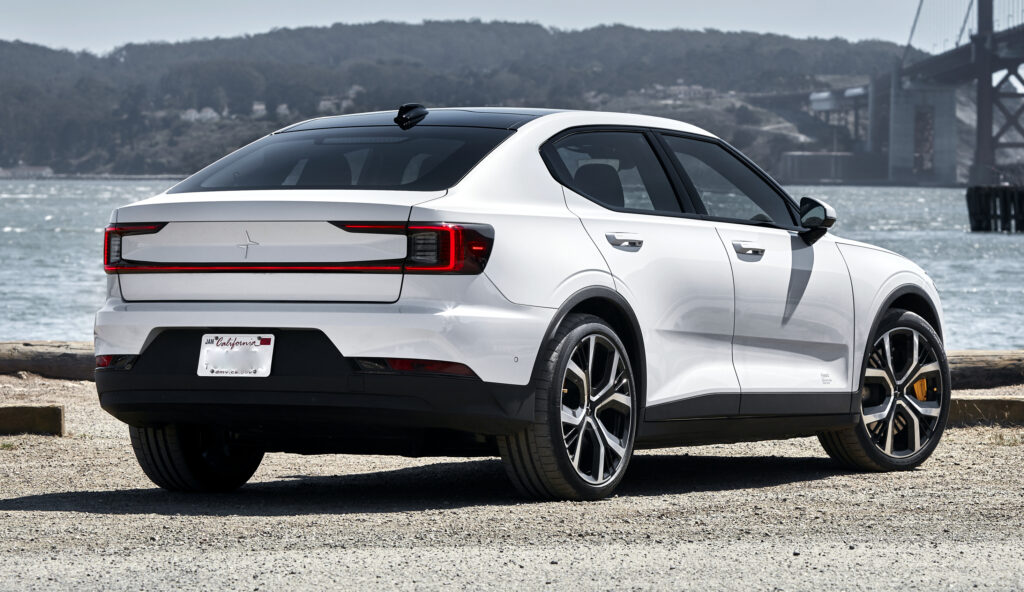
The backroad jaunt is where I recently took the all-new Ford Mustang Mach-E—a competitor—and the Polestar 2 showed its sharp reflexes and balanced handling around the bends. EVs benefit from a low center of gravity, and the 2’s steering was taut and the assist felt natural. I later found the screen on the center panel where you can configure the performance settings and saw that it was set up for “sporty,” which made sense. I guess I was driving “sporty” on the freeway, as well.
Plentiful Power
The 2021 Polestar 2 is a potent beast. The Launch Edition features two motors, one up front and one in the rear, powered by a 78-kilowatt-hour battery. This all adds up to 408 horsepower and 487 pound-feet of torque, good for a pulse-raising zero-to-60 run in under five seconds. Range is 233 miles, which is good, if not the best in the market.
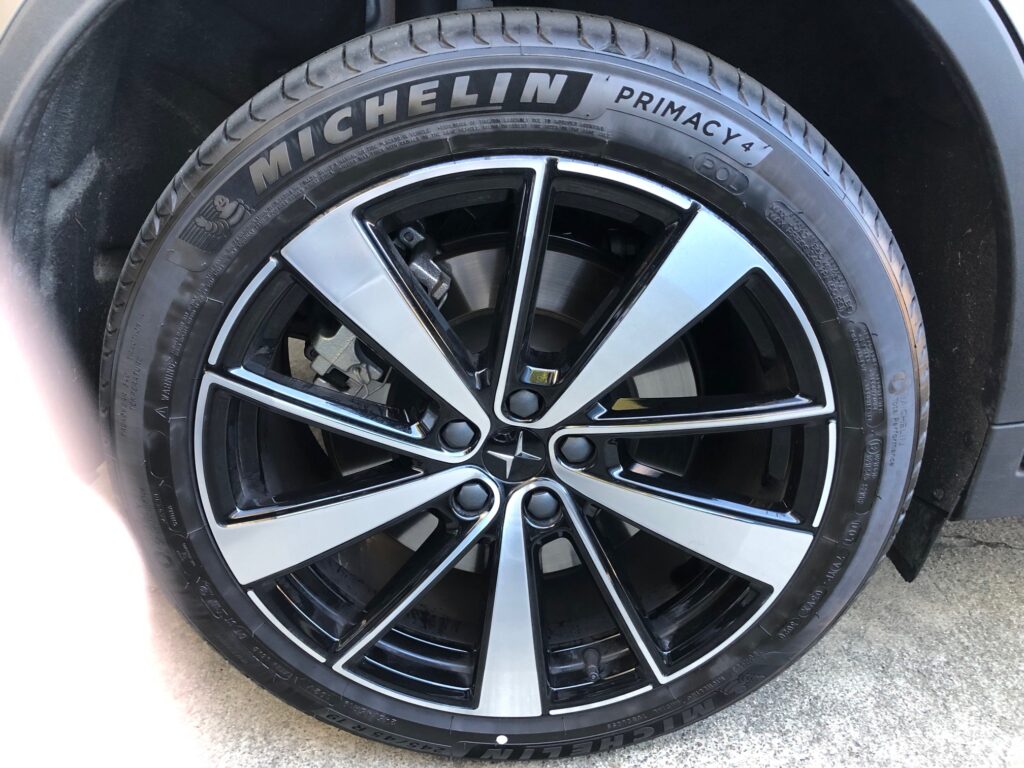
The Polestar 2 features one pedal driving—a favorite of mine and many other EV drivers—where, thanks to regenerative braking, you use only the accelerator to move forward or slow down (even to a full stop). Of course, the brake pedal is right there when you need it, but in normal driving you can ignore it. The car offers three drive modes for regenerative braking (Off, Low, Standard), along with on or off settings for creep mode (where it acts like a “normal” automatic). It could stop and go with pinpoint accuracy with the “Standard” setting.
High-Tech Infotainment
As an EV, the 2021 Polestar 2 is a silent traveler, and the time on the road gave me the chance to test what is the world’s first in-vehicle application of an infotainment system powered by Android with Google apps and services built-in. As the setup was done already, all I did was say, “Hey, Google, play Bluegrass,” and the friendly female voice said, “I’m choosing Indie Bluegrass from Spotify,” and that was that. I also tested Google for navigation and asking for my home address produced a large map on the center screen and turn-by-turn voice directions.
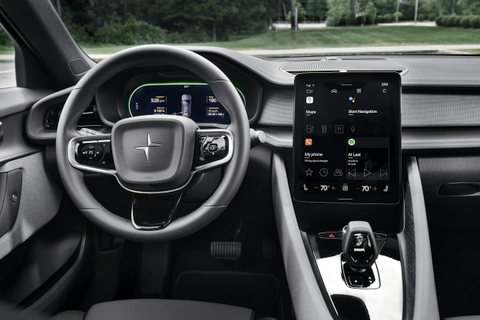
Inside, the 2021 Polestar 2 shows its Volvo origins. The lines are drawn with a brilliant, clean, and slightly cold aesthetic, and materials are matte and, according to the press info, it’s a fully vegan interior with the WeaveTech fabric and reconstructed wood trim. The ambiance isn’t overtly luxurious, but the traditionally super-supportive Volvo seats are right there with multiple adjustments and the fat, leather-wrapped wheel is nice to hold.
The 11-inch center panel screen is smaller than a Tesla’s, but Polestar parent Volvo has developed a beautiful and practical touchscreen interface. The home screen is quartered into maps, Phone, Driver Performance, and Music, but you can swipe to lots of different views, including the settings pages, where you can configure your driving experience.
Charging and Efficiency
Enquiring minds always want to know about charging. I used my solar-panel-powered Level 2 (240V) home charger, but if you’re on the road and want to top off quickly, DC fast charging at 150 kilowatts takes about 40 minutes to get you to 80 percent. It’ll take eight hours to refill the battery from 0 to 100 percent using Level 2 charging (perfect for overnight or a workday). If you just plug in to standard a 120V household outlet, you’d better give it 22 hours. That’s pretty normal for a battery of this size in 2021.
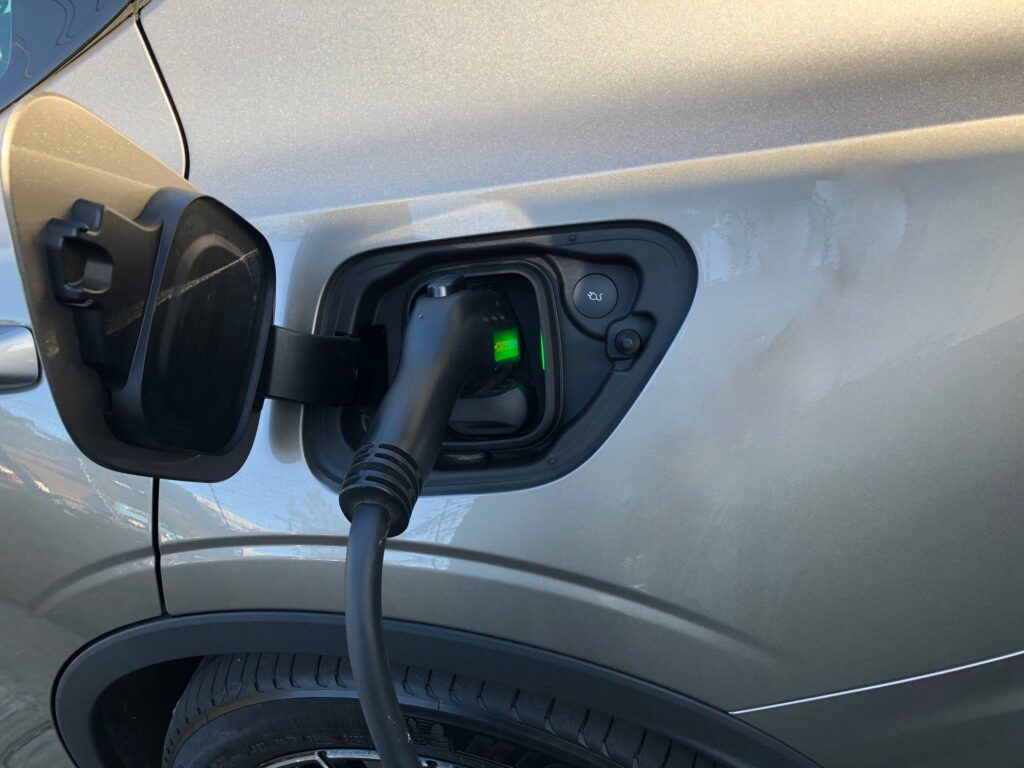
The EPA gives this all-electric car ratings of 96 MPGe city/88 highway/92 combined (where MPGe is Miles per Gallon equivalent that measures how far the car will travel on the electric energy equivalent of a gallon of gasoline/33.7 kilowatt-hours). Use that number to compare with other electric vehicles or, better yet, use the kWh/100 miles metric that is also on all new vehicles. That will tell you how much energy your vehicle needs to travel 100 miles, a more accurate measurement than our traditional fuel economy (mpg) numbers.
Of course, the EPA “green” scores are 10 for both Smog and Greenhouse Gas. Any emissions for an EV come not from a tailpipe but from manufacturing, transportation and how the electricity to move it is produced. These should diminish as more and more of the grid uses power from renewable sources, such as solar and wind, and as the manufacturers themselves use green energy—some, including GM, already do.
High tech treats include the absence of a start button. Just carry the chunky key fob in your pocket and walk up to the car. Open the door and sit down. Pull the stylish ring-shaped shift knob into D or R and the car moves. Leaving is the same thing. Put it in P (Park), open the door, step out, close the door, and walk away. You can press “Lock” on the digital key fob if that makes you feel more secure.
This is a premium vehicle, and the window sticker shows it. My test car, in “Moon” metallic, started at $59,900, and with $1,200 extra for the paint and $1,300 for destination (it’s shipped from its Chinese factory), came to $62,400.
Competitors
This brings up a point. Who’s the customer, and what makes the 2021 Polestar 2 stand out? The obvious direct competitor is the Tesla Model Y (if you want the hatchback capability) or the Model 3. Teslas have the advantage of their supercharger network at this point, although Polestar is affiliating with ChargePoint and is compatible with most of the existing and growing charging network by all providers.
Tesla offers the same kind of minimalism as the Polestar 2. I haven’t yet driven a Model Y, but compared to other Teslas I’ve sampled, the Polestar 2 feels like a traditional car, with a more elaborate instrument panel and a more developed interior design language.

One new and more affordable option is the Mustang Mach-E, but the personality difference is substantial. If the Polestar 2 is a Tesla for Volvo enthusiasts, the Mach-E is a first EV for muscle car fans. With its exuberant styling inside and out and leftward running horse logo, the Mustang is competitive with the Polestar 2 only in its EV performance.
Matching the Polestar in power and range is the Jaguar I-Pace. However, the base S model is already $10,000 more expensive than the Polestar 2, although the interior ambiance is a bit fancier. The Audi E-tron is another luxury competitor, but I haven’t had any seat time in it yet. Mercedes-Benz is rolling out its EQ models and that brand has huge luxury equity. Ones to watch include the upcoming BMW i4 and recently announced Kia EV6, but you can’t buy one of those yet. Lexus, Infiniti and Acura are all promising EVs, but most of those don’t even have target introduction dates. New electric vehicles like the VW ID.4 are worthy, but can’t touch the Polestar 2 for sheer performance.
Time will tell with the Polestar brand, but the 2021 Polestar 2 is competitive and hits all the right buttons. The next model, the 3, will be a coupe marketed between the 1 and the 2 in price. There is also the stunning Precept concept that is slated to appear sometime in the future. For more affordable EVs, the Volvo brand has big plans to expand its lineup, and already offers the XC40 Recharge crossover.
It’s an exciting time to be an EV shopper, and it’s just going to get better.
Story by Steve Schaefer. Photos by Steve Schaefer and Volvo.
Make sure to opt-in to the Clean Fleet Report newsletter (top right of page) to be notified of all new stories and vehicle reviews.
Related Stories You Might Enjoy—The EV Competition
Another take on the Polestar: Gary Lieber Polestar 2 Road Trip
Tech: Benchmarking the Model Y EV
Flash Drive: Tesla Model 3
Flash Drive: 2021 Ford Mustang Mach-E EV
Road Trip: 2021 Ford Mustang Mach-E EV
Road Test: 2021 Ford Mustang Mach-E EV
Road Test: 2019 Jaguar I-Pace
Flash Drive: 2021 Volkswagen ID.4
News: Mercedes EQC 400 EV Debuts
Disclosure:
Clean Fleet Report is loaned free test vehicles from automakers to evaluate, typically for a week at a time. Our road tests are based on this one-week drive of a new vehicle. Because of this we don’t address issues such as long-term reliability or total cost of ownership. In addition, we are often invited to manufacturer events highlighting new vehicles or technology. As part of these events we may be offered free transportation, lodging or meals. We do our best to present our unvarnished evaluations of vehicles and news irrespective of these inducements.
Our focus is on vehicles that offer the best fuel economy in their class, which leads us to emphasize electric cars, plug-in hybrids, hybrids and diesels. We also feature those efficient gas-powered vehicles that are among the top mpg vehicles in their class. In addition, we aim to offer reviews and news on advanced technology and the alternative fuel vehicle market. We welcome any feedback from vehicle owners and are dedicated to providing a forum for alternative viewpoints. Please let us know your views at publisher@cleanfleetreport.com.

20 thoughts on “Road Test: 2021 Polestar 2”